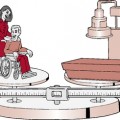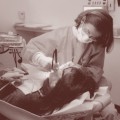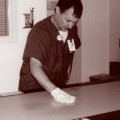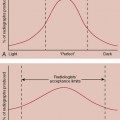To provide quality service, a thorough understanding of your chosen field is necessary. You must have a command of the technical aspects of radiography so that you are free to concentrate on the health care customer who is traditionally called the patient. This book will assist you on your journey. Because education at this level is a complicated task, the majority of the chapters in Part I offers help in understanding the learning process itself. Noted educators share their ideas and suggestions about how to get started with the study habits and personal adjustments required of a new student. Their expertise, based on contact with hundreds of radiography students, provides the type of information required to establish effective methods of study. Careful attention to this material will help set the stage for all that follows throughout your education in radiography. Lifelong learning is the key to success, and the study habits developed now will serve you well in the years to come.
Part I also presents the history and future of health care, in general, and of radiology, in particular. Although volumes have been written on the history of medicine, Chapter 5 provides a concise treatment of this subject. The history of radiology is particularly interesting and exciting; it is marked by constant change and advances.
The day-to-day practice of radiography is complex. Many new and interesting terms, examinations, and relationships must be learned. Chapters 8 through 11 in Part II introduce terminology, equipment, examinations, and radiograph production. These topics are immediately encountered on entering the clinical phase of the educational program; therefore they are presented here to begin to give you a working knowledge of what is happening in the radiology department. Your early clinical rotations will mean more to you if you already have a grasp of the imaging environment.
Part II also includes discussions on medical ethics and the legal implications of the practice of radiography. These two areas must be taken seriously throughout the duration of the educational process and beyond to ensure that you practice according to established standards and within legal parameters.
The remainder of Part II deals with topics that you must understand as you work within a radiology department or, as it is called in many institutions, the imaging department. The operation of a radiology complex is discussed in terms of its organizational structure. Becoming aware of your surroundings enables you to begin to understand your role. Radiology is a very expensive department; hence, you are also introduced to the complex economic issues involved in its operation. Ensuring quality services is a serious matter that is presented in its own chapter.
Radiologic technologists follow a code of ethics that includes attention to radiation safety and public education. Entering the field of radiography implies that you will accept some exposure to radiation and learn to protect yourself and the public from unnecessary exposure. A complete chapter is devoted to this topic. This knowledge will enable you to feel confident and comfortable as you enter the clinical site, and you will be self-assured as friends, relatives, and patients ask questions about radiation safety. With an understanding of this material, you will be in a position to educate both patients and acquaintances properly.
The entire field of health care has been advancing at a rapid pace. With this rapid advancement has come the increased specialization on the part of physicians and the emergence of many new health care fields (known collectively as the allied health professions). Part II ends with a description of the roles of the other members of the health care team who you will encounter during your clinical experiences. Why learn about other health care professionals? The total care of the patient depends on the cooperation and mutual respect of all departments. You will provide services to many of these departments, and other departments will provide services to radiology. All departments exist to provide high-quality service to patients, families, and physicians. Teamwork requires that everyone understands the role of the other members. In this treatment of the subject, you will learn about the educational background and job responsibilities of the fellow professionals you will encounter during patient care. You will soon realize that everyone is equally important in providing clinical care and service to the sick or injured.
Part III addresses the professional aspects of radiologic technology. Serious, career-minded professionals need to know as much as possible about the field and the opportunities it provides. Leaders in radiologic technology present the profession as they see it, based on many years of experience. The American Registry of Radiologic Technologists (ARRT) is discussed, and its role as the certifying agency for thousands of radiologic technologists is explained. Professional organizations, all dedicated to providing members the finest in continuing education and professional representation, are also described. These organizations play an important role in your education, as well as in your career plans.
Part III also discusses career advancement and specialization in radiologic technology. A career in this profession can take you in many directions. Although you are only beginning your career, this discussion will help you better understand the varied opportunities available in this field; it is never too early to begin setting long-term goals.
Gaining a basic understanding of the financing of health care and its impact on you as a professional, patient, and taxpayer is also vital. You have chosen a fascinating and exciting career—one that is always changing and one that never stands still.
Again, congratulations on being accepted to study in the field of health care! In few other careers can you find the potential for doing so much good while achieving satisfaction. Your future studies will be interesting and intriguing as you strive to become a professional in your field. As you study and observe those around you, you will come to know what is meant by the term professional. You will see both positive and negative examples of professional performance; before long, you will be able to decide which of these you want to emulate in your daily work. The title professional is earned through dedication and hard work; you cannot purchase it with tuition dollars. As you progress in your studies, take pride in what you do and act appropriately. Your growth as a professional does not end when you become a radiographer; it will continue throughout your career. You must act like a professional and demand to be treated like one, and you must also remember that you, as well as all other health care workers, are important to the patient’s well-being.
During the next 2 to 4 years you will have the chance to examine your career goals and personal expectations. Enjoy your studies and your chosen profession. Although much hard work is involved, it can be satisfying. Make the most of this time, and you will construct a secure foundation for a lifetime career in professional health care. Remember, mastering the technical portions of medical radiography will free you to concentrate on the reason you came into this field—to provide people with the best care you can. The balance of this chapter explains just how to practice value-added, high-touch radiography by understanding all the variables involved in the delivery of this important service.
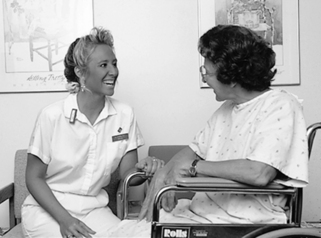
![]()





